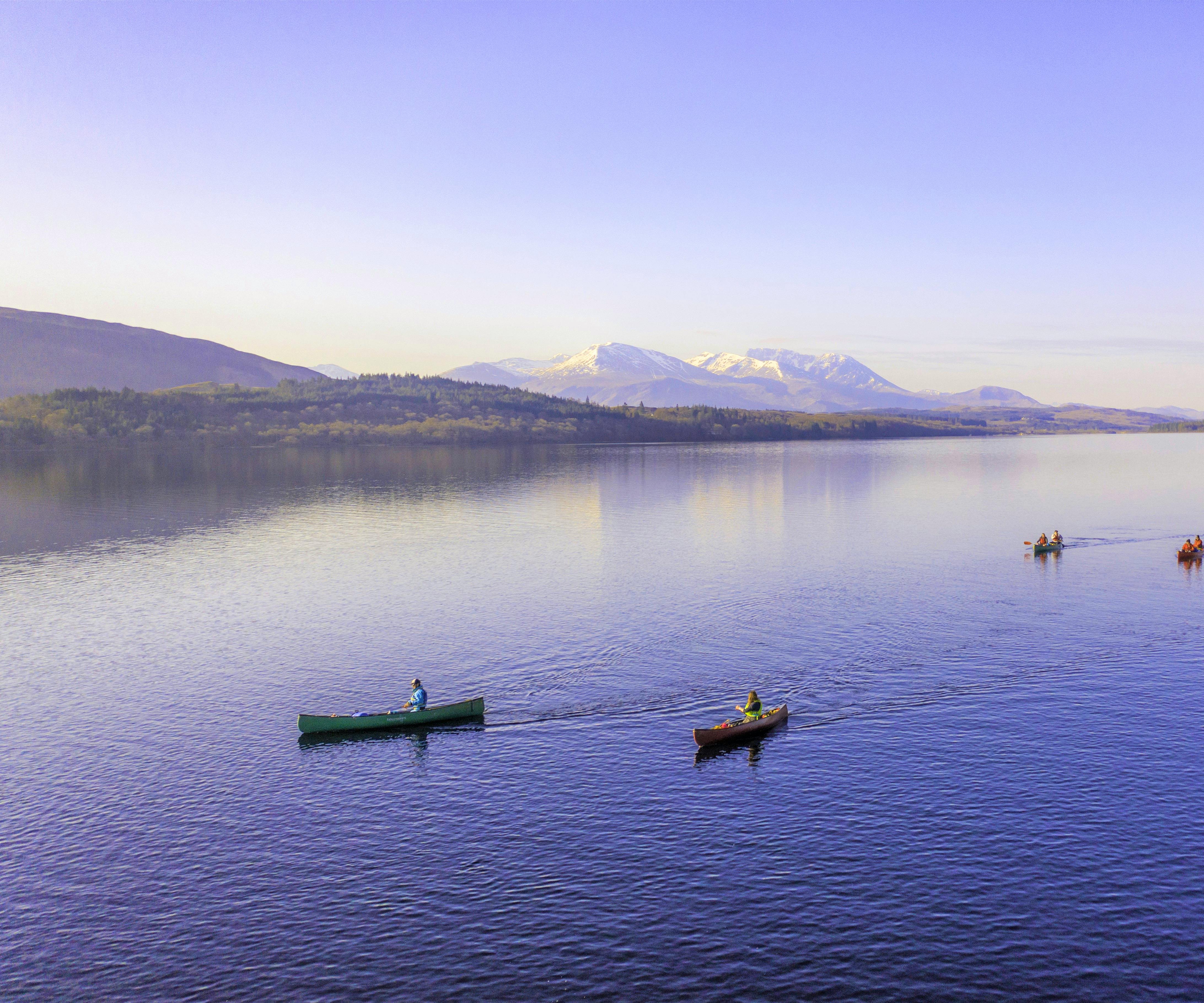What Is The Longest Via Ferrata In Switzerland? (Climb Guide)
Interested in climbing Switzerland’s longest Via Ferrata? Not too sure where to start? This guide will help to get you on track.
At Skyhook, we offer a beginner’s Via Ferrata experience, showing you the ropes of climbing these fun routes.
But, if you’ve tackled that and are after a greater challenge, then you might want to try your hand at the longest Via Ferrata in Switzerland. After all, this is one of the best things to do when hiking in Switzerland.
To help you pull this off, this climbing guide covers everything you need to know.
What is a Via Ferrata in Switzerland?
A Via Ferrata, which is Italian for "iron path," is a protected climbing route that often includes steel cables, ladders, rungs, and other fixed anchors. These routes are designed to make it easier and safer for climbers and hikers to access challenging and exposed alpine terrain.
Via Ferratas are quite popular in Switzerland, as they allow people to experience the thrill of high-altitude adventures while providing a degree of protection.
In Switzerland, Via Ferratas can be found in various mountainous regions, such as the Swiss Alps.
These routes typically follow steep rock faces, ridges, or cliff walls, and participants use a combination of specialized equipment, including a harness, a helmet, and a Via Ferrata kit that includes carabiners and a lanyard with an energy-absorbing system.
Via Ferrata vary in difficulty levels, from easy routes suitable for beginners to more demanding and physically challenging ones for experienced climbers.
Participants can enjoy breathtaking mountain views and a sense of accomplishment as they traverse these routes while being securely attached to the steel cables and other safety features.
Many Via Ferrata in Switzerland are well-maintained and provide an exciting way for both locals and tourists to explore the country's stunning alpine landscapes in a unique and adventurous manner.
It's important to check the specific requirements and conditions of each Via Ferrata before attempting it, and it's often advisable to go with a guide or experienced partners, especially on more challenging routes.
See also: Most dangerous hike in Switzerland
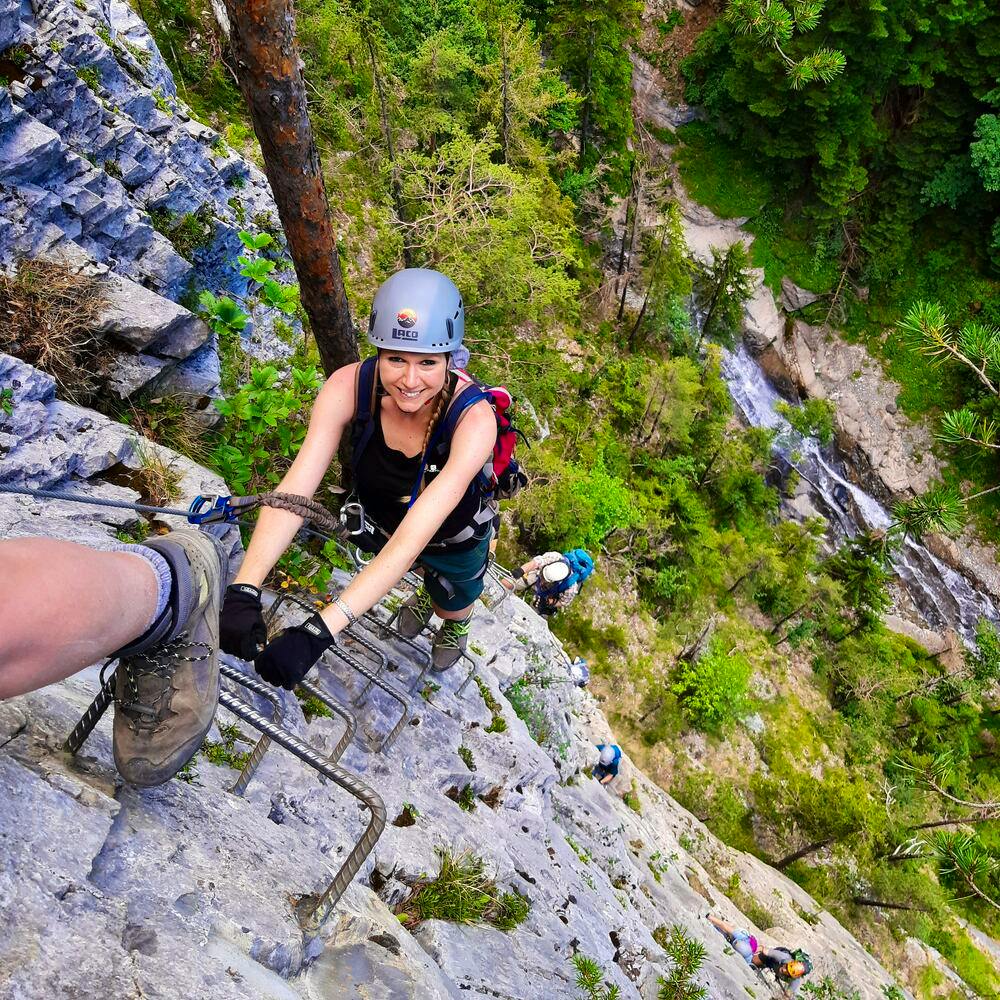
What is the Longest Via Ferrata in Switzerland?
The longest Via Ferrata in Switzerland is the Daubenhorn Via Ferrata. Situated on the Daubenhorn mountain in the Bernese Alps, near the town of Leukerbad, this impressive route is known for its length and challenging climb.
It’s integrated into the southeastern face of the mountain and extends all the way to the summit.
The Daubenhorn Via Ferrata is classified as extremely difficult (ED), and undertaking this adventure requires serious physical fitness.
Climbers should be prepared for a demanding 6-hour ascent from the base of the Via Ferrata at an altitude of 2350 meters. This challenging climb rewards climbers with stunning alpine scenery and a true sense of accomplishment.
For those who prefer an alternative way to reach the Daubenhorn summit, there is also the option of a circuitous trek starting from Gemmi Pass. This is one of the best routes for hiking in the Alps in Switzerland.
However, the Via Ferrata remains a thrilling and challenging choice for those seeking an adrenaline-pumping adventure in the Swiss Alps.
See also: St Bernard Monastery Switzerland
10 Best Via Ferrata in Switzerland
Switzerland boasts a diverse range of Via Ferrata, each offering unique challenges and breathtaking alpine scenery.
Whether you’re interested in climbing the longest Via Ferrata in Switzerland, or just want a route with outstanding scenery, here are some of the best options.
1. Daubenhorn Via Ferrata
Located on the Daubenhorn mountain in the Bernese Alps, this Via Ferrata is renowned for its impressive length. As we’ve already mentioned, it’s the longest Via Ferrata in Switzerland.
It extends from the southeastern face of the mountain all the way to the summit, offering a relentless adventure for climbers.
As an extremely difficult (ED) route, it demands top-notch fitness to complete the arduous 6-hour climb from the base, situated at an elevation of 2350 meters.
2. Murren Via Ferrata
Nestled near the enchanting village of Mürren in the Bernese Oberland, this Via Ferrata treats climbers to awe-inspiring vistas of the iconic Eiger, Mönch, and Jungfrau peaks.
The route winds through rocky outcrops and exposed sections, providing a thrilling yet accessible experience for intermediate climbers.
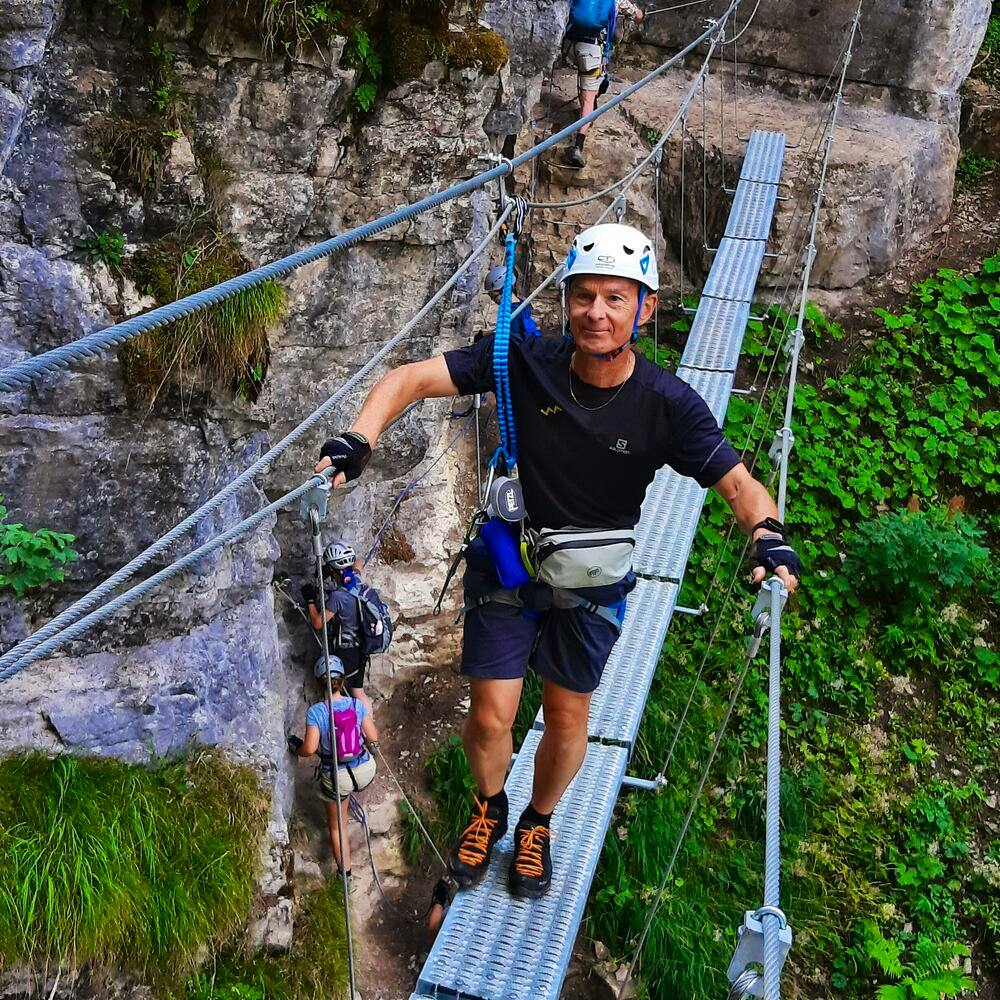
3. Saas Fee Via Ferrata
For those seeking a high-altitude adventure, the Saas Fee Via Ferrata is a perfect choice. Offering sweeping views of the Saas Valley and its surrounding peaks, this route presents a challenging climb that rewards participants with some of the most mesmerizing vistas in Switzerland.
4. Engelberg Via Ferrata
Close to the charming town of Engelberg, this Via Ferrata combines climbing with an exhilarating suspension bridge.
The bridge adds an extra layer of excitement to the experience, making it a must-visit destination for thrill-seekers.
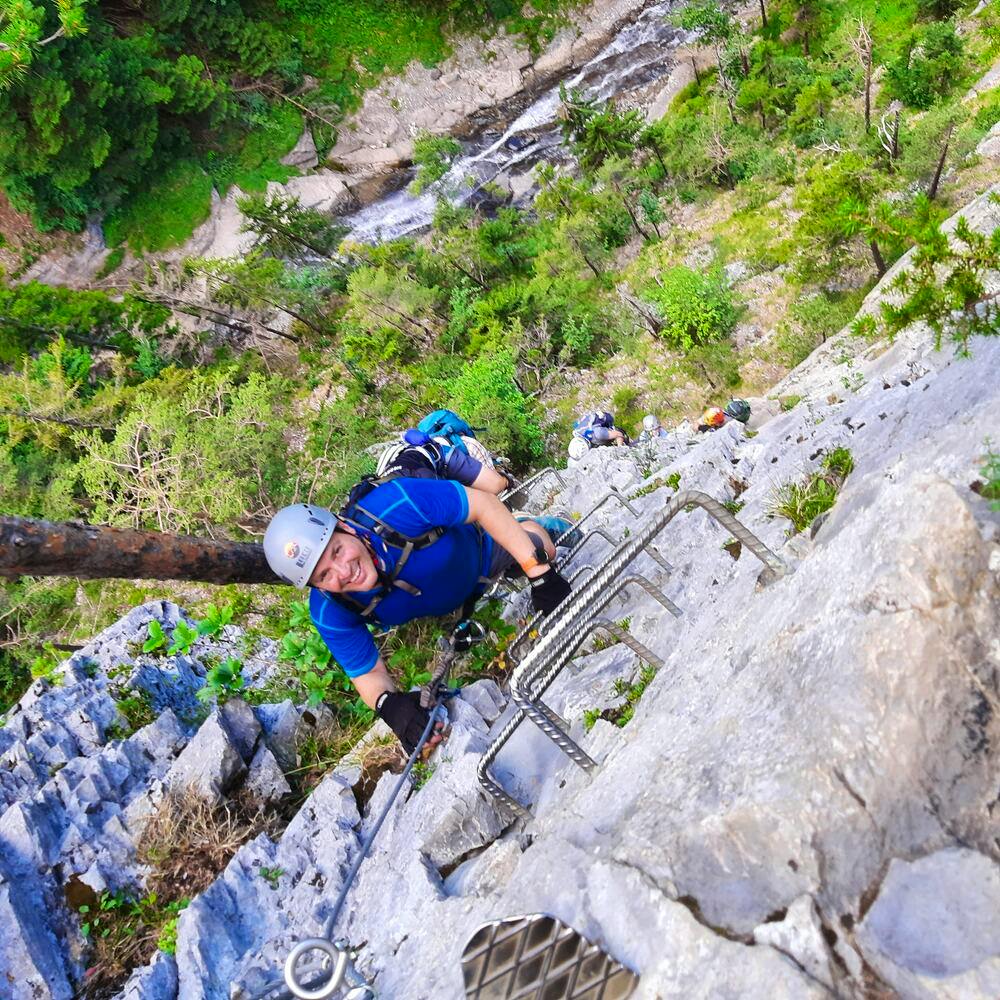
5. La Dalle de Chantel (Verbier)
Set in the Verbier region, this Via Ferrata is renowned for its exposure and captivating alpine scenery. Climbers can traverse a rock wall with dramatic drops, all while enjoying the beauty of the surrounding landscape.

Latest Deals
6. Gimmelwald Via Ferrata
Offering breathtaking views of the Lauterbrunnen Valley, this Via Ferrata is nestled near Gimmelwald and Mürren. The route features a combination of ladder climbs, steep sections, and cable crossings, providing an exhilarating experience for climbers of varying skill levels.
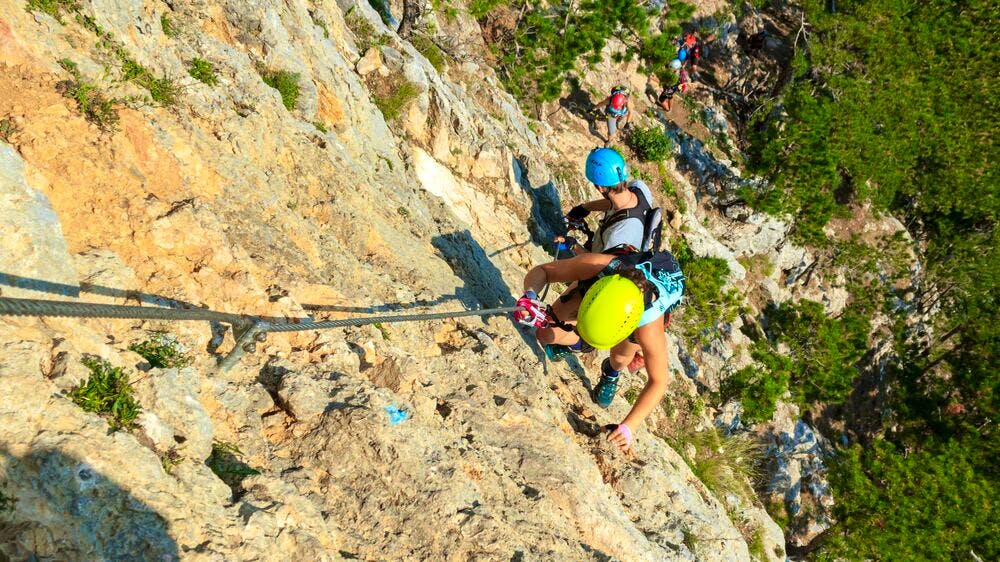
7. Grimsel Via Ferrata
Situated near the Grimsel Pass, this Via Ferrata is a blend of alpine landscapes and rich history. Climbers can explore the fascinating surroundings while tackling a route that combines exposed ledges and challenging ascents.
8. Schwägalp Via Ferrata
Found in the Appenzell region, this Via Ferrata offers a unique experience with stunning views of the Alpstein massif. Climbers can marvel at the jagged peaks of the region while navigating a route that includes metal steps, ladders, and thrilling cable crossings.
9. Saxer Lücke Via Ferrata
Located in the Alpstein massif, this route is famous for its exposed sections and magnificent vistas. Climbers can challenge themselves with sections that offer spectacular drop-offs, making for an exhilarating and memorable ascent.
10. Chli Schijen Via Ferrata
Situated in the heart of the Gotthard Massif, this Via Ferrata is known for its steep and challenging sections.
As you ascend the rocky walls, you'll be rewarded with sweeping views of the Gotthard region, making this a must-visit for experienced climbers looking for a thrilling adventure.
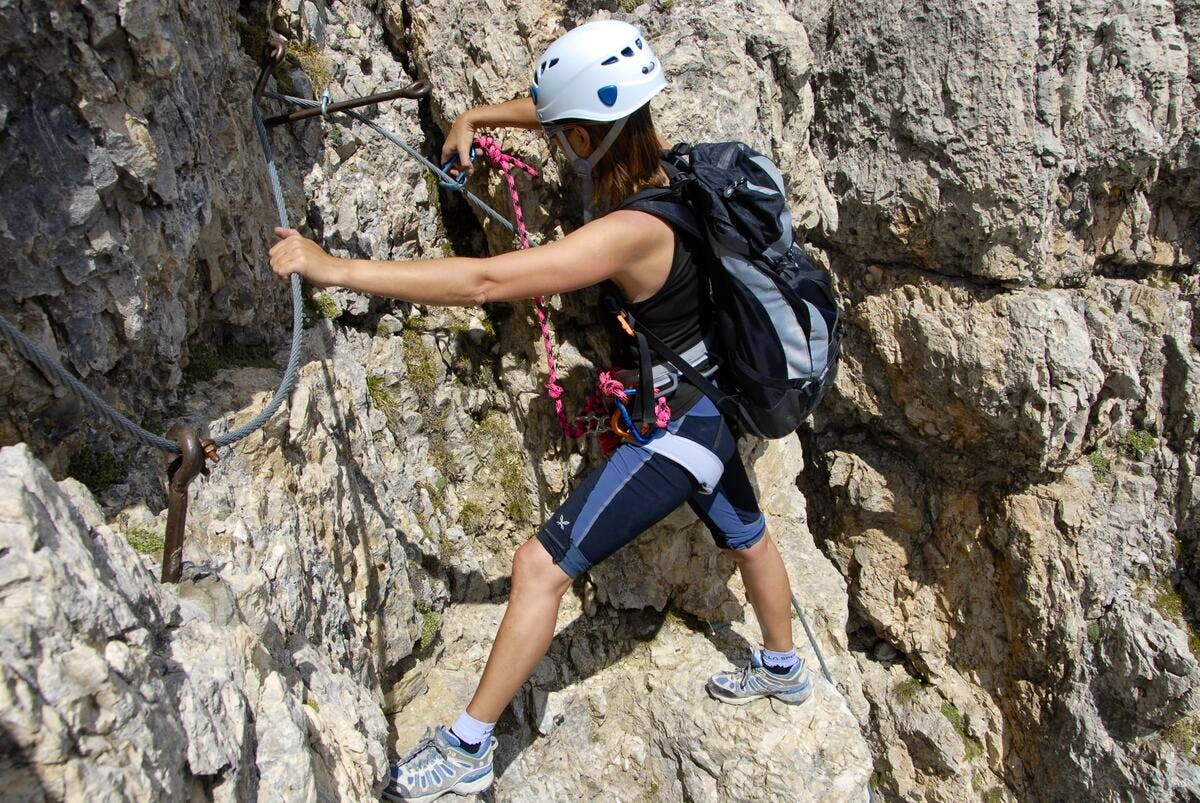
Tips for Climbing Via Ferrata in Switzerland
Climbing Via Ferrata in Switzerland can be a thrilling adventure, but it's essential to prioritize safety and be well-prepared. Whether you’re climbing the smallest or the longest Via Ferrata in Switzerland, here are some tips to help you make the most of your climbing experience.
Go with a Guide
If you're new to Via Ferrata or tackling a particularly challenging route, consider hiring a certified mountain guide. They can provide valuable expertise, enhance your safety, and offer insights into the local terrain.
Going on a guided trip also means you’ll be set up with all of the equipment you need to tackle the route, making your ascent a lot easier to manage.
Assess Your Fitness and Skill Level
Before attempting any Via Ferrata, evaluate your fitness and climbing abilities.
Routes vary in difficulty, so choose one that matches your skill level. It's advisable to start with easier routes and progressively tackle more challenging ones as you gain experience.
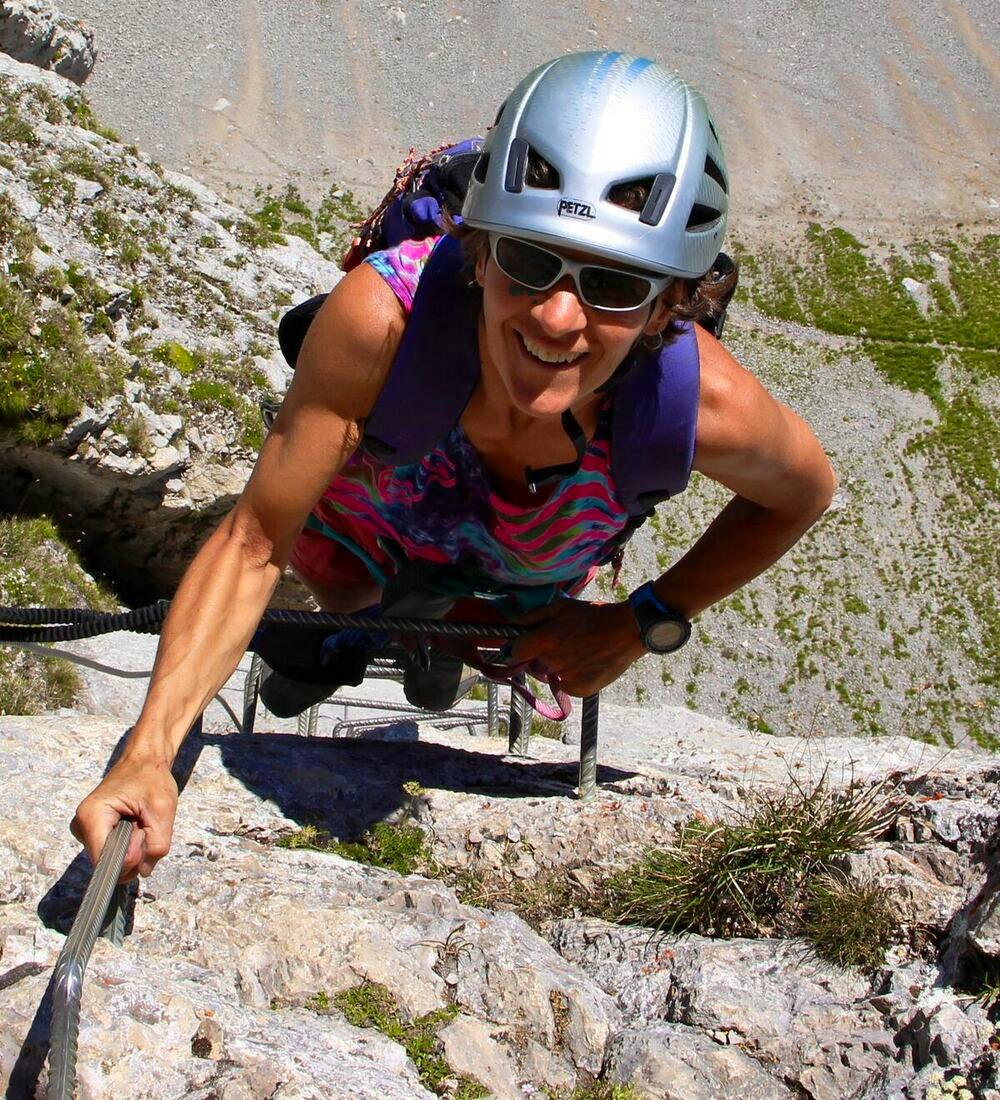
Check Current Conditions
Before you head out, check the latest weather conditions, route conditions, and any local advisories or restrictions. Even during the best time of year to hike in Switzerland, the weather in the mountains can change rapidly. So, stay informed and be prepared.
Use Appropriate Gear
Ensure you have the necessary gear, including a harness, helmet, and a Via Ferrata kit with carabiners and a lanyard. Rent or purchase quality gear and make sure it's in good condition.
Wear comfortable, weather-appropriate clothing and sturdy, ankle-supporting footwear. Layer your clothing to adapt to changing temperatures at higher altitudes.
Safety First
Always use your safety gear properly, including clipping onto the safety cable. Check that your equipment is secure before you start and regularly throughout the climb.
Stay Hydrated and Energized
Bring enough water and high-energy snacks to keep you hydrated and fueled during your climb. High-altitude activities can be physically demanding.

Plan Ahead
Familiarize yourself with the route, study the map, and understand the route's specifics, including exit points and emergency procedures. It's a good idea to have a map or GPS device with you.
Start Early
Begin your climb early in the day to allow ample time for the journey and to avoid afternoon storms and potential overcrowding on popular routes.
This is especially important if you’re doing winter hiking in Switzerland, as you need to factor in the early sunset times.
Communicate
If you're climbing with a group, maintain clear communication. Discuss your plans, have a designated leader, and use verbal and visual signals to stay connected while on the route. It’s always a good idea to establish how you’ll communicate before you head onto the mountain.
Emergency Preparedness
Carry a first aid kit, a mobile phone, and emergency contacts. Know how to use your phone in areas with weak or no signal.
Respect Other Climbers
Be considerate of fellow climbers. Wait your turn at busy sections, pass only when safe, and avoid dislodging loose rocks or debris.
Stay Calm
If you encounter challenges on the route, stay calm, and don't rush. Take your time to make safe and well-planned moves.
Follow Local Regulations
Abide by any local regulations, respect private property, and pay attention to route-specific rules.
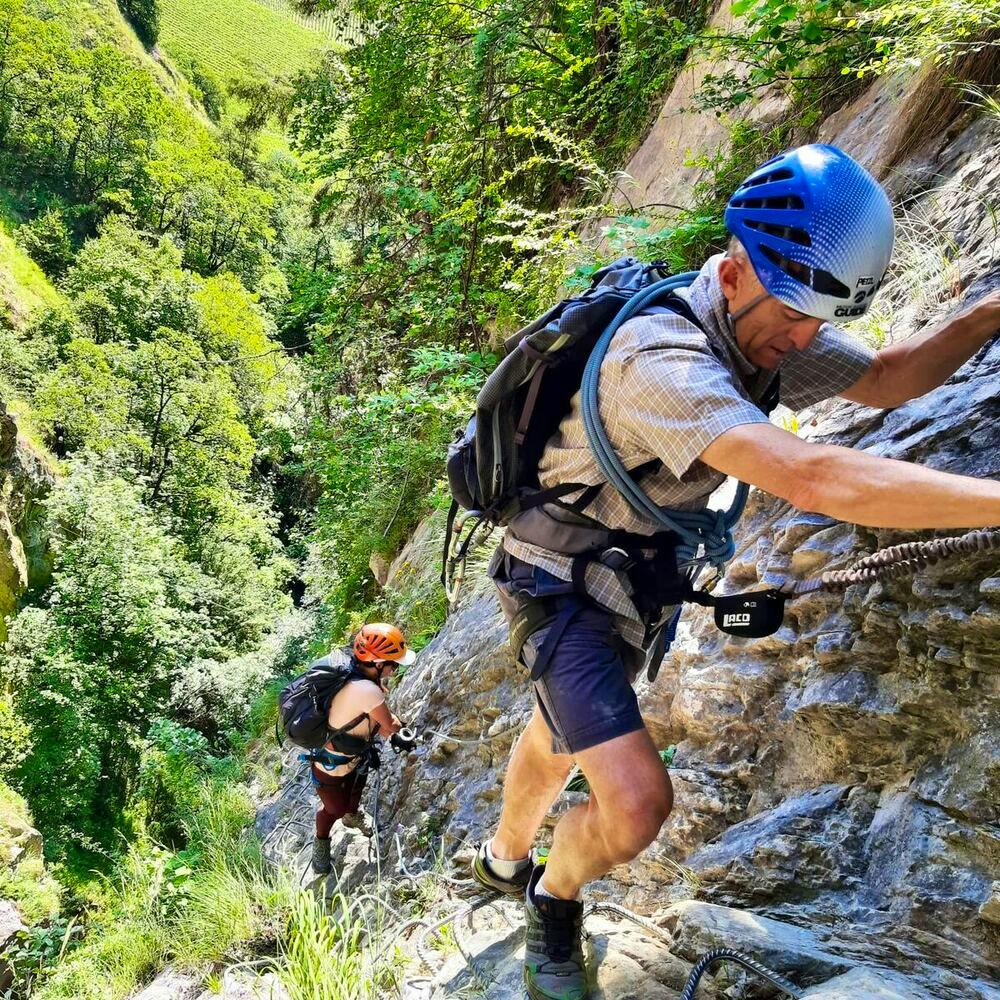
Conclusion
Climbing Via Ferrata in Switzerland can be an unforgettable experience, providing access to stunning mountain scenery.
With the right preparation and a focus on safety, you can enjoy a memorable adventure while exploring the Swiss Alps.
Whether you’re climbing the longest Via Ferrata in Switzerland or want to go for a more beginner-friendly route, make sure you know what you’re getting into and that you come prepared.
With enough planning in place, climbing Via Ferrata is always an amazing experience.
Read More Switzerland Articles
Find your next adventure
Why Skyhook?
Join over 27,000 Skyhook adventurers who've used our platform to book directly with our vetted local guides, at local prices (we never markup).
Expert Local Guides
Experienced local guides, handpicked by us.
Best Prices
Never pay a markup on the local guide's price.
Exclusive Club
Earn loyalty rewards every time you travel.
Great Social Vibes
Small group tours provide a richer experience.
Stellar Feedback
Over 2,800 reviews, average of 4.9/5 stars.











